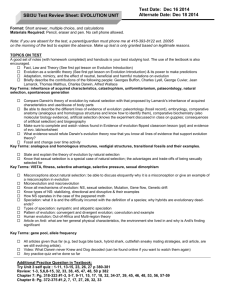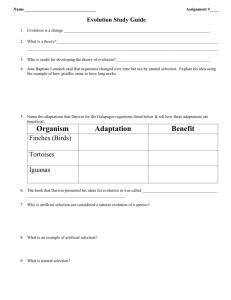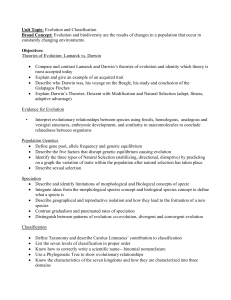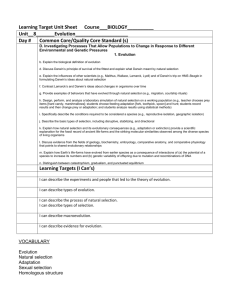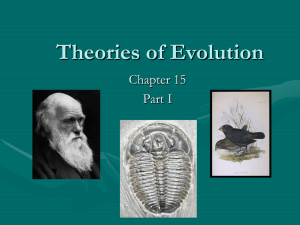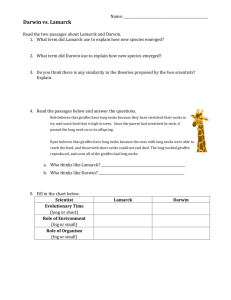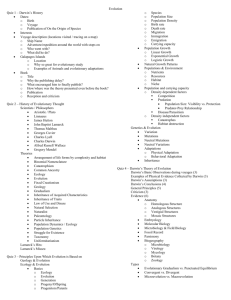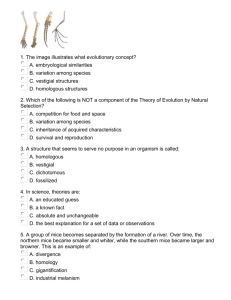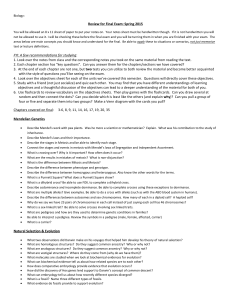8.L.4.1 and 4.2 Evolution and Genetics Study Guide
advertisement
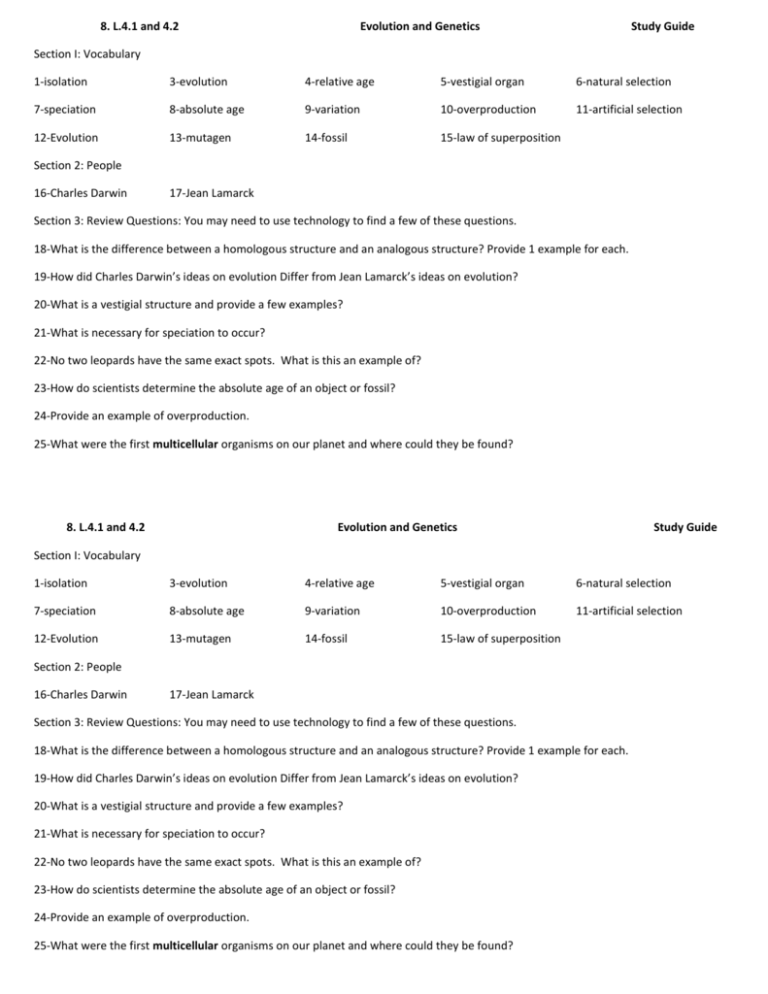
8. L.4.1 and 4.2 Evolution and Genetics Study Guide Section I: Vocabulary 1-isolation 3-evolution 4-relative age 5-vestigial organ 6-natural selection 7-speciation 8-absolute age 9-variation 10-overproduction 11-artificial selection 12-Evolution 13-mutagen 14-fossil 15-law of superposition Section 2: People 16-Charles Darwin 17-Jean Lamarck Section 3: Review Questions: You may need to use technology to find a few of these questions. 18-What is the difference between a homologous structure and an analogous structure? Provide 1 example for each. 19-How did Charles Darwin’s ideas on evolution Differ from Jean Lamarck’s ideas on evolution? 20-What is a vestigial structure and provide a few examples? 21-What is necessary for speciation to occur? 22-No two leopards have the same exact spots. What is this an example of? 23-How do scientists determine the absolute age of an object or fossil? 24-Provide an example of overproduction. 25-What were the first multicellular organisms on our planet and where could they be found? 8. L.4.1 and 4.2 Evolution and Genetics Study Guide Section I: Vocabulary 1-isolation 3-evolution 4-relative age 5-vestigial organ 6-natural selection 7-speciation 8-absolute age 9-variation 10-overproduction 11-artificial selection 12-Evolution 13-mutagen 14-fossil 15-law of superposition Section 2: People 16-Charles Darwin 17-Jean Lamarck Section 3: Review Questions: You may need to use technology to find a few of these questions. 18-What is the difference between a homologous structure and an analogous structure? Provide 1 example for each. 19-How did Charles Darwin’s ideas on evolution Differ from Jean Lamarck’s ideas on evolution? 20-What is a vestigial structure and provide a few examples? 21-What is necessary for speciation to occur? 22-No two leopards have the same exact spots. What is this an example of? 23-How do scientists determine the absolute age of an object or fossil? 24-Provide an example of overproduction. 25-What were the first multicellular organisms on our planet and where could they be found? 8. L.4.1 and 4.2 Evolution and Genetics Study Guide Section I: Vocabulary 1-isolation 3-evolution 4-relative age 5-vestigial organ 6-natural selection 7-speciation 8-absolute age 9-variation 10-overproduction 11-artificial selection 12-Evolution 13-mutagen 14-fossil 15-law of superposition Section 2: People 16-Charles Darwin 17-Jean Lamarck Section 3: Review Questions: You may need to use technology to find a few of these questions. 18-What is the difference between a homologous structure and an analogous structure? Provide 1 example for each. 19-How did Charles Darwin’s ideas on evolution Differ from Jean Lamarck’s ideas on evolution? 20-What is a vestigial structure and provide a few examples? 21-What is necessary for speciation to occur? 22-No two leopards have the same exact spots. What is this an example of? 23-How do scientists determine the absolute age of an object or fossil? 24-Provide an example of overproduction. 25-What were the first multicellular organisms on our planet and where could they be found? 8. L.4.1 and 4.2 Evolution and Genetics Study Guide Section I: Vocabulary 1-isolation 3-evolution 4-relative age 5-vestigial organ 6-natural selection 7-speciation 8-absolute age 9-variation 10-overproduction 11-artificial selection 12-Evolution 13-mutagen 14-fossil 15-law of superposition Section 2: People 16-Charles Darwin 17-Jean Lamarck Section 3: Review Questions: You may need to use technology to find a few of these questions. 18-What is the difference between a homologous structure and an analogous structure? Provide 1 example for each. 19-How did Charles Darwin’s ideas on evolution Differ from Jean Lamarck’s ideas on evolution? 20-What is a vestigial structure and provide a few examples? 21-What is necessary for speciation to occur? 22-No two leopards have the same exact spots. What is this an example of? 23-How do scientists determine the absolute age of an object or fossil? 24-Provide an example of overproduction. 25-What were the first multicellular organisms on our planet and where could they be found?
